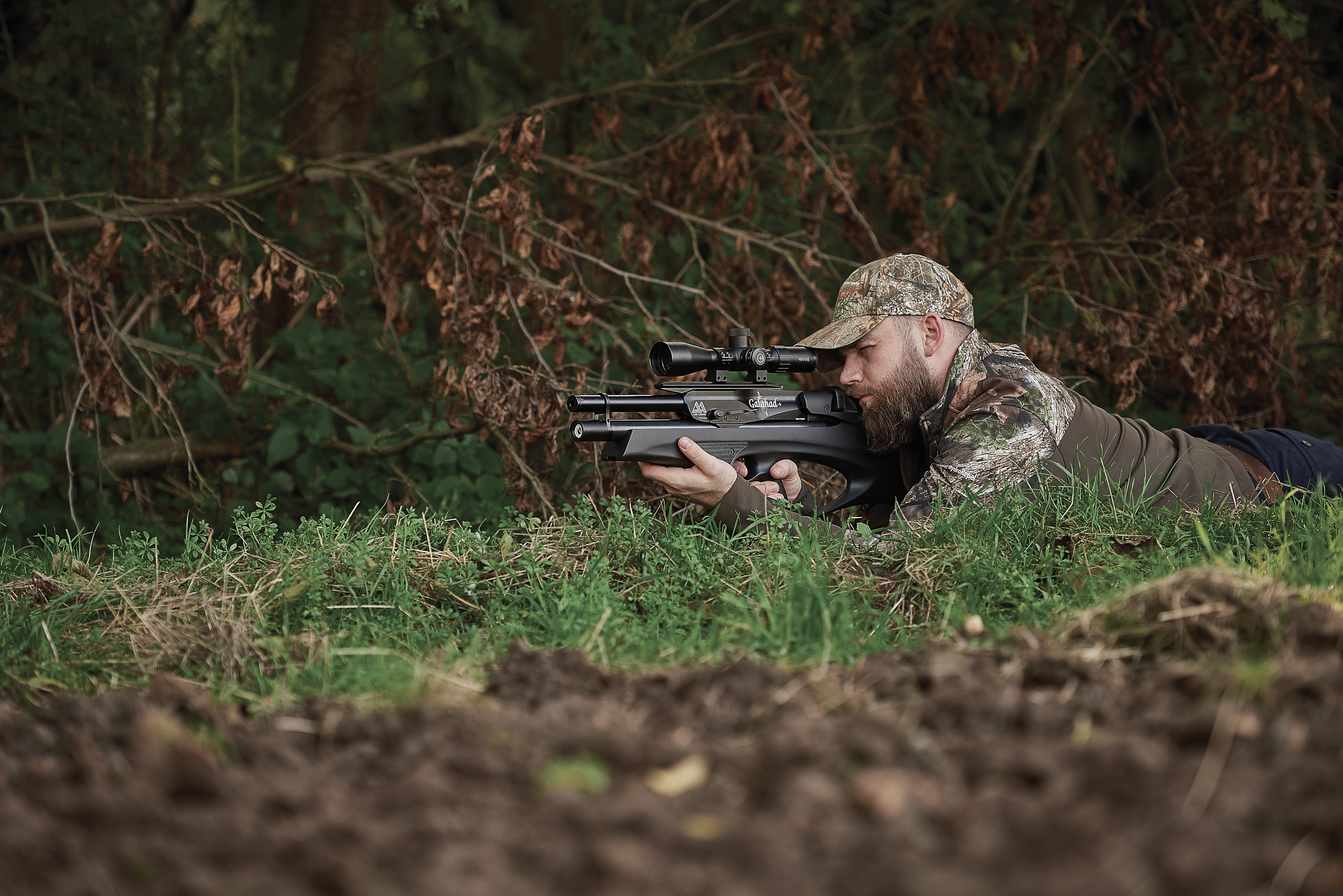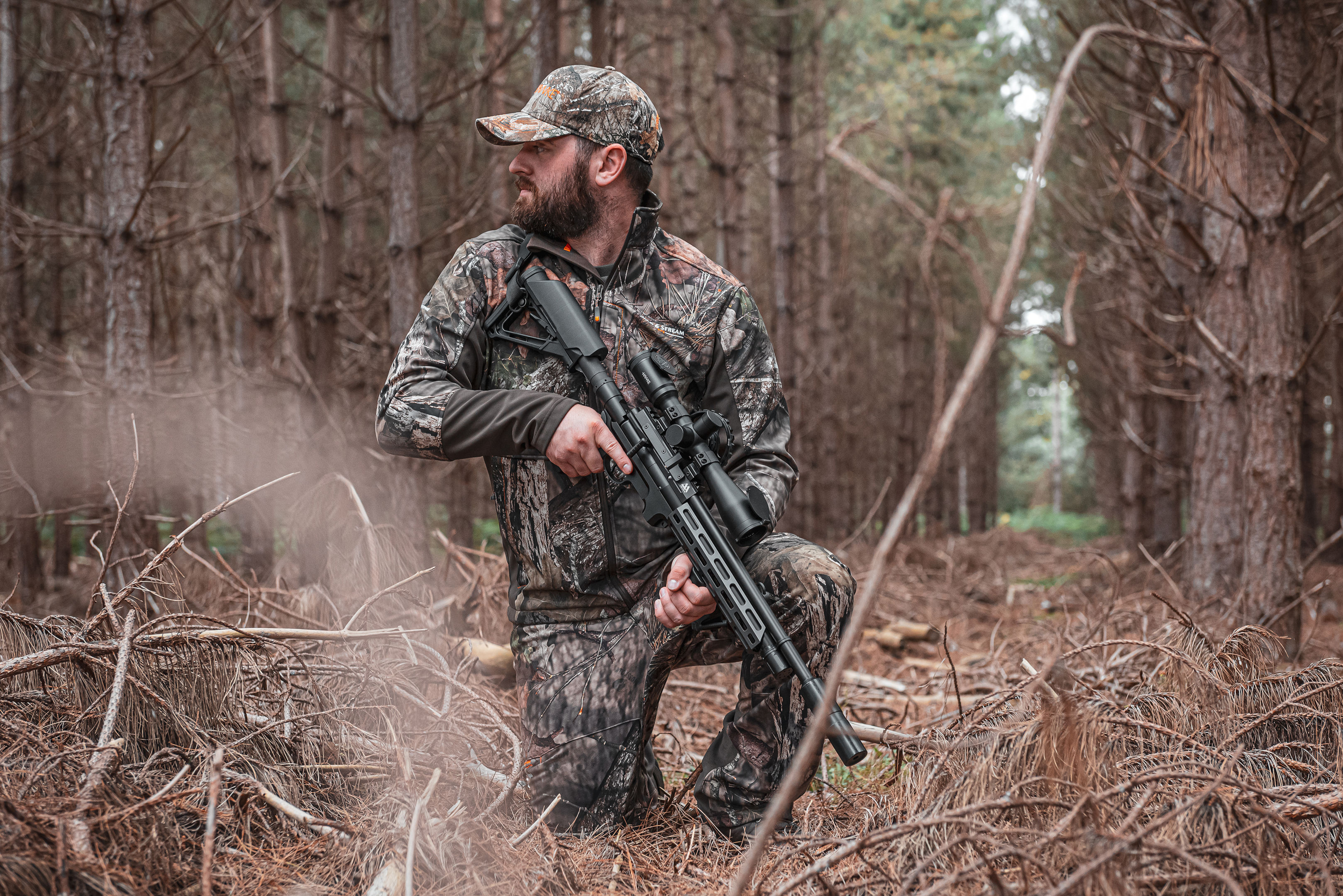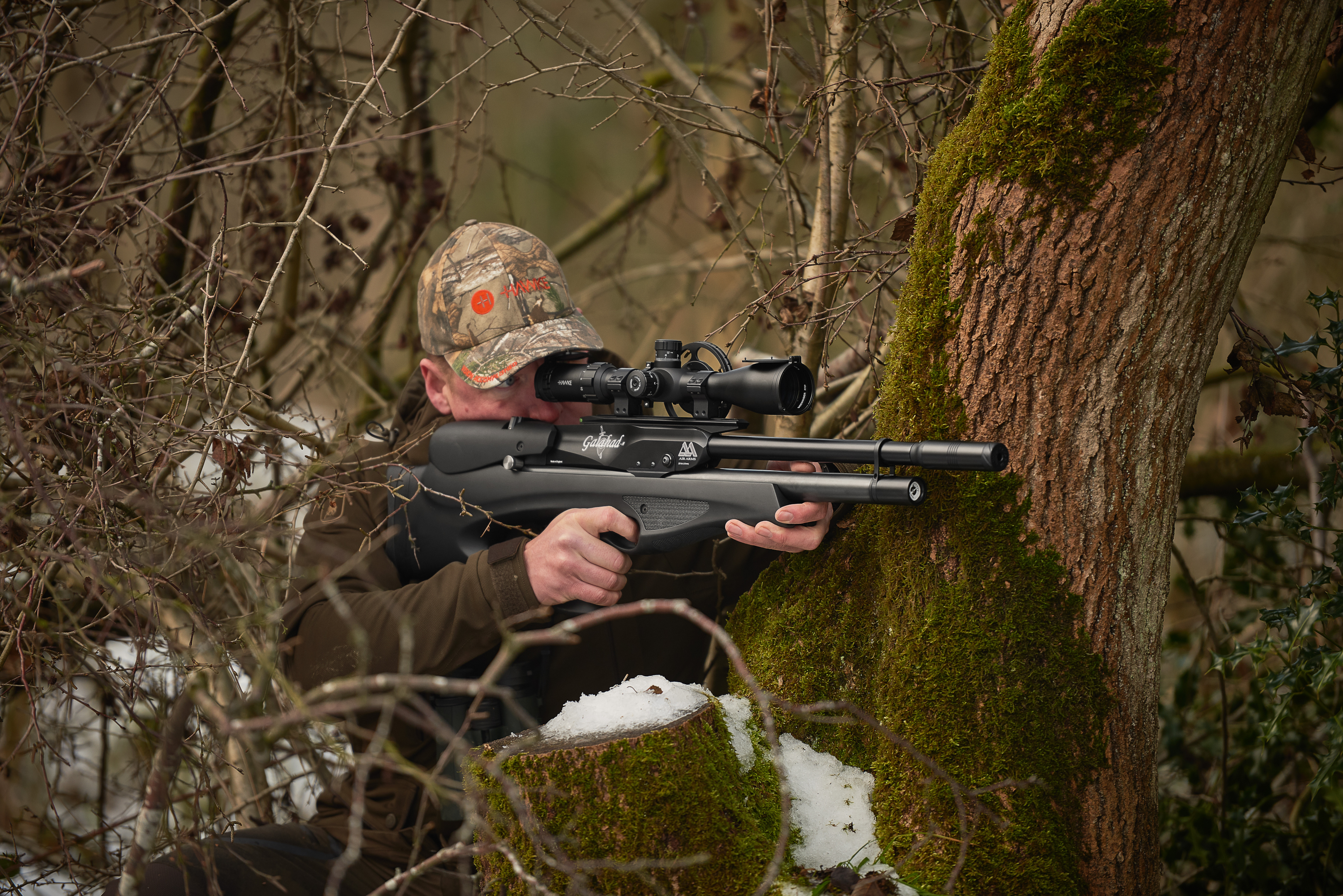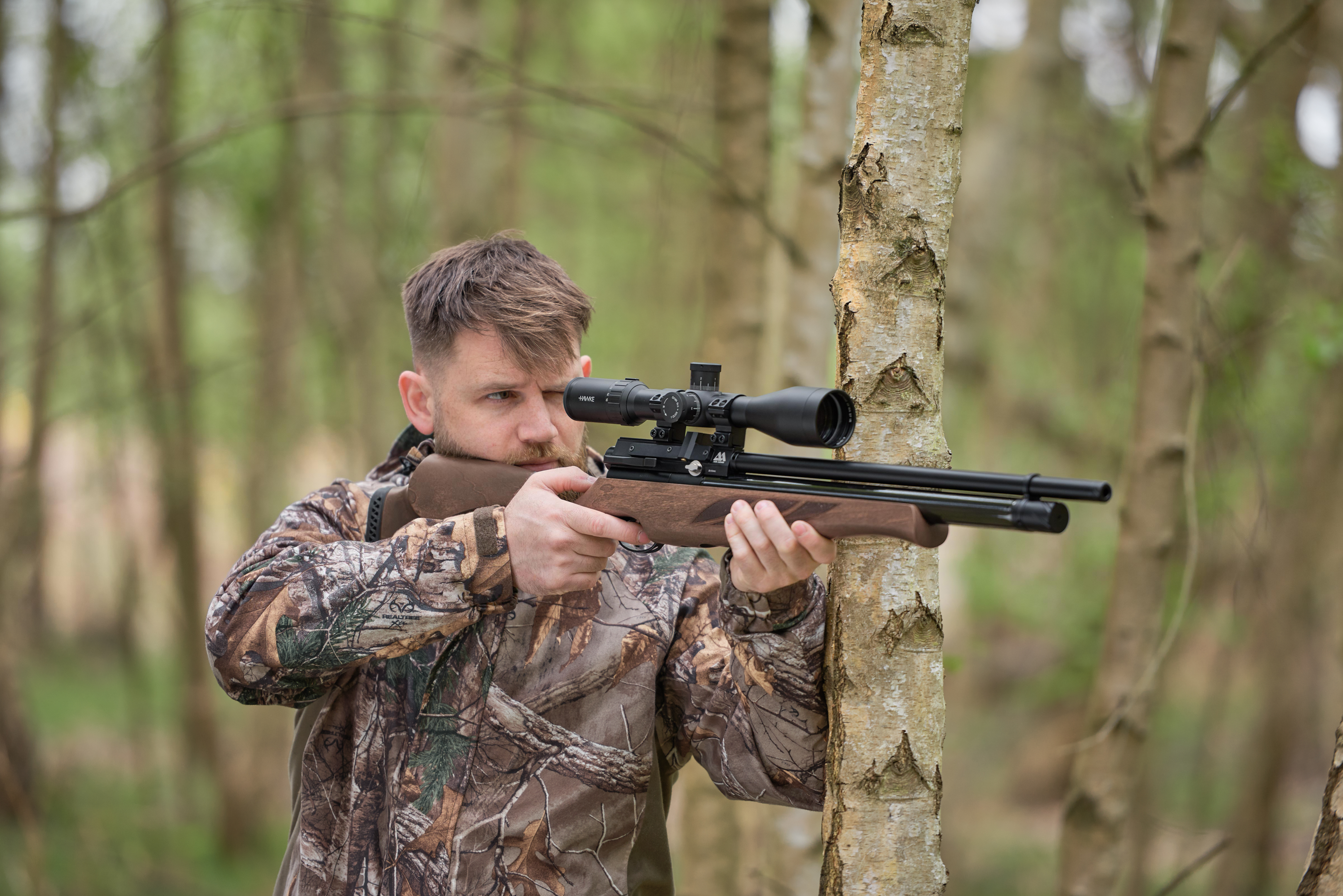
How do air rifles work?17 May 2024 | Air Arms
Air rifles have been a popular choice for shooting enthusiasts, hunters, and sportsmen for years - all across the world. These versatile weapons use compressed air or gas to propel projectiles, offering a quieter and more economical alternative to traditional firearms. But how do they work?Understanding how air rifles work is crucial for anyone looking to delve into the world of shooting sports or hunting. By grasping the inner workings of air rifles, you can optimise your shooting experience, enhance accuracy, and ensure your safety when out in the field. In this blog post, we will explore the fundamental principles behind air rifles, the different types available, their components, working mechanisms, maintenance needs, and the significance of adhering to safety precautions.  So, how do they work?In general, a air rifle works by harnessing energy from compressed air or other gases, which are mechanically pressurised and discharged to propel projectiles. In basic terms, an air gun utilises air pressure to shoot a pellet, distinguishing it from firearms that rely on powder (gunpowder) for propulsion. However, the way in which an air rifle works is typically dependent on what type of air rifle it is and wha power source it has. Let's take a better look at this so you can best understand how each type of air rifles work. Types of Air RiflesAir rifles come in various designs and mechanisms, each catering to different preferences and shooting styles. To gain a comprehensive understanding of how air rifles function, it's crucial to delve into the specific mechanisms of various types and grasp their operational intricacies. Let's explore the working mechanisms of break barrel, PCP (Pre-Charged Pneumatic), CO2, spring piston, and gas ram piston air rifles in a little more detail. Break Barrel Air RiflesBreak barrel air rifles are characterised by a barrel that hinges downward to cock the rifle. This action compresses a spring or gas piston, storing energy for propelling the projectile. When the shooter breaks the barrel downward, it compresses the spring or gas ram, storing potential energy. Upon pulling the trigger, this stored energy is released, which forces air to propel the pellet down the barrel, ensuring consistent power and precision. The reliability and effectiveness of this design make break barrel rifles versatile for various shooting applications.
Spring Air RiflesSpring piston air rifles rely on a coiled spring and a piston to generate power. When the rifle is cocked, the spring is compressed, and upon trigger release, the spring pushes the piston forward, propelling the pellet down the barrel. Spring piston rifles are known for their power, reliability, and affordability, making them a common choice for hunting and pest control.
PCP (Pre-Charged Pneumatic) Air RiflesPCP air rifles operate by using compressed air stored in a reservoir within the rifle. These rifles provide consistent power and accuracy shot after shot, making them favoured by competitive shooters and hunters. While they require a separate air source for refilling, their performance and precision often outweigh this requirement.
CO2 Air RiflesCO2-powered air rifles rely on small cartridges containing compressed carbon dioxide gas. When the trigger is pulled, the gas is released, propelling the pellet forward. These rifles are favoured for their ease of use, smooth shooting experience, and convenience, making them popular among recreational shooters and plinking enthusiasts seeking a hassle-free shooting experience. CO2 rifles are popular for plinking, target shooting, and recreational use due to their smooth shooting experience.
Gas piston air riflesGas ram piston air rifles employ a gas filled cylinder or piston filled with compressed air or gas to propel pellets. This system offers consistent power, reduced vibration, and smoother shooting cycles compared to traditional spring mechanisms. Gas ram rifles are valued for their precision, durability, and enhanced shooting comfort.
 Components of an Air RifleTo understand how air rifles work, it's essential to familiarise yourself with the key components that make up these versatile weapons. Here are the fundamental parts found in most air rifles: BarrelThe barrel of an air rifle is where the projectile travels before being released. The length, rifling, and quality of the barrel can significantly impact the accuracy and velocity of the shot. A well-maintained and properly aligned barrel is crucial for consistent and precise shooting. Trigger MechanismThe trigger mechanism is responsible for releasing the compressed air or spring tension to propel the projectile. A smooth and adjustable trigger is essential for accurate shooting, as it allows the shooter to control the timing of the shot effectively. StockThe stock of an air rifle serves as the main body of the weapon, providing a grip for the shooter and housing the internal components. Stocks come in various materials, such as wood, synthetic materials, or metal, and can be customised for comfort and fit to enhance shooting stability. Scope or SightsOptical accessories like scopes or iron sights are crucial for aiming and achieving precision shots. Scopes offer magnification and reticles for long-range shooting, while iron sights provide a basic aiming reference for shorter distances. Choosing the right sight system can greatly improve shooting accuracy. Understanding how each component functions and contributes to the overall performance of an air rifle is essential for optimising shooting efficiency, accuracy, and enjoyment. By mastering the interplay of these elements, you can elevate their skills and experience with air rifles.  Operation of an air rifle
Understanding these basic principles can help shooters operate their air rifles effectively and achieve desired performance outcomes for various shooting activities.  Air Rifle PerformanceThe performance of air rifles is impacted by a variety of factors that collectively determine the shooting experience and effectiveness of the firearm. Let's explore the key elements that influence the performance of air rifles: Velocity:The velocity at which pellets are propelled from the air rifle is a crucial performance metric. It is influenced by factors such as the power source (spring, gas ram, PCP, CO2), barrel length, and the efficiency of the firing mechanism. Higher velocities can enhance the rifle's range and impact potential. Accuracy:Achieving precise and consistent shot placement is essential for shooters. The accuracy of an air rifle is affected by the quality of the barrel (smoothness, rifling), the trigger mechanism (smooth pull, predictability), and the sight system (iron sights, scopes). A well-crafted rifle with a reliable sighting setup can significantly improve accuracy. Consistency:Consistency in power output and shot trajectory is paramount for maintaining accuracy and repeatability. The power source, internal components, and overall design of the air rifle play a critical role in ensuring consistent performance from shot to shot. Regulated power sources like PCP rifles offer superior consistency compared to spring-powered rifles. Recoil:Recoil, or the backward force generated upon firing, can impact shooting comfort and accuracy. Different mechanisms exhibit varying levels of recoil, with spring piston rifles typically producing more recoil compared to gas ram or PCP rifles. Minimising recoil can enhance shooter control and help maintain accuracy. Maintenance:Regular maintenance practices are essential for preserving the performance and longevity of an air rifle. Cleaning the barrel, lubricating moving parts, checking seals, and inspecting components for wear are vital maintenance tasks that ensure optimal performance and prevent issues that could affect accuracy or power delivery. Understanding these critical performance factors equips shooters with the knowledge needed to make informed decisions when selecting an air rifle, improving their shooting proficiency, and maximising the capabilities of their chosen firearm.  How to look after your Air RifleTo maintain your air rifle and ensure its optimal performance and longevity, consider the following maintenance tips: Cleaning the Barrel:Regularly clean the barrel of your air rifle to remove any debris, residue, or lead buildup that can affect accuracy. Use a cleaning rod, patches, and a solvent specifically designed for airgun barrels. Lubrication:Apply appropriate lubricants to key moving parts such as the trigger mechanism, cocking lever, and pivot points. Be cautious not to over-lubricate, as excess oil can attract dust and debris. Inspect Seals:Check the seals, O-rings, and other crucial components for wear and tear. Replace any damaged seals to prevent air leaks and maintain consistent power output. Sight Adjustment:Regularly check and adjust the sights on your air rifle to ensure accurate shot placement. Align the sights properly and make adjustments according to your shooting preferences. Stock Maintenance:Clean and maintain the stock of your air rifle using appropriate cleaning products to preserve its appearance and integrity. Inspect for cracks, dents, or signs of damage. Storage:Store your air rifle in a dry, cool environment away from direct sunlight and moisture. Consider using a gun case or safe to protect it from dust, humidity, and physical damage. Check Screws and Mounts:Periodically check and tighten screws, mounts, and scope rings to prevent loosening during shooting, which can affect accuracy and zero retention. Safety Precautions for Air Rifle ShootingWhen it comes to using air rifles, safety should always be a top priority. Understanding and implementing proper handling techniques, wearing the right safety gear, and following guidelines for safe shooting practices are crucial for preventing accidents and ensuring a positive shooting experience for you and those around you. Let's explore some essential safety precautions for air rifle enthusiasts: Importance of Proper Handling:
Safety Gear Recommendations:
 Guidelines for Shooting Safely:
By adhering to these safety precautions, air rifle enthusiasts can minimise risks, promote responsible shooting practices, and enjoy their hobby with peace of mind. We recommend that you check out your local air rifle laws so that you can shoot safely and within the bounds of your jurisdiction. Final ThoughtsFrom the barrel and trigger mechanism to the power source and stock, each component plays a vital role in shaping the functionality and efficiency of an air rifle. By mastering these components and factors influencing performance like velocity, accuracy, and consistency, shooters can enhance their skills, optimise their shooting experience, and make informed decisions when selecting an air rifle. Maintenance practices, including cleaning, lubrication, and proper storage, are essential for preserving the longevity and performance of air rifles. By following safety precautions, wearing appropriate gear, and adhering to shooting guidelines, enthusiasts can safeguard themselves and others, ensuring a safe and enjoyable shooting experience. Before You GoHere at Air Arms, we would love to help you achieve your shooting goals - from small game hunting, target practice and learning all about recreational and sporting activities in the air guns community. Whether you're looking for entry level air rifles or a more advanced perfect air rifle for you, you can speak to a member of our team today and they will be happy to help find the best air rifle to suit your needs. |
|